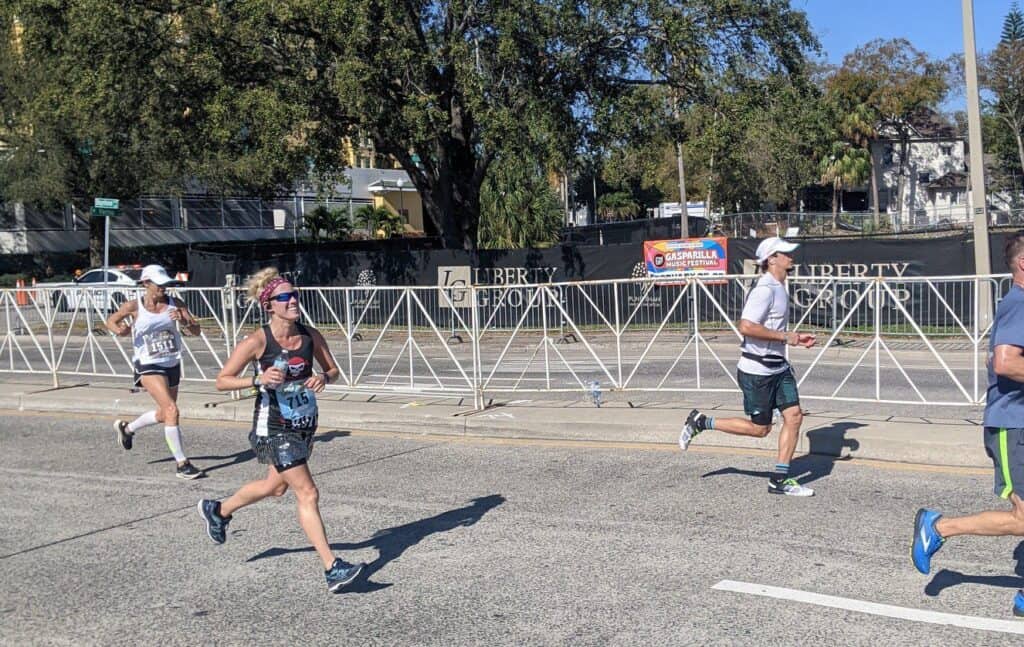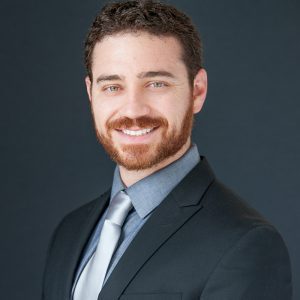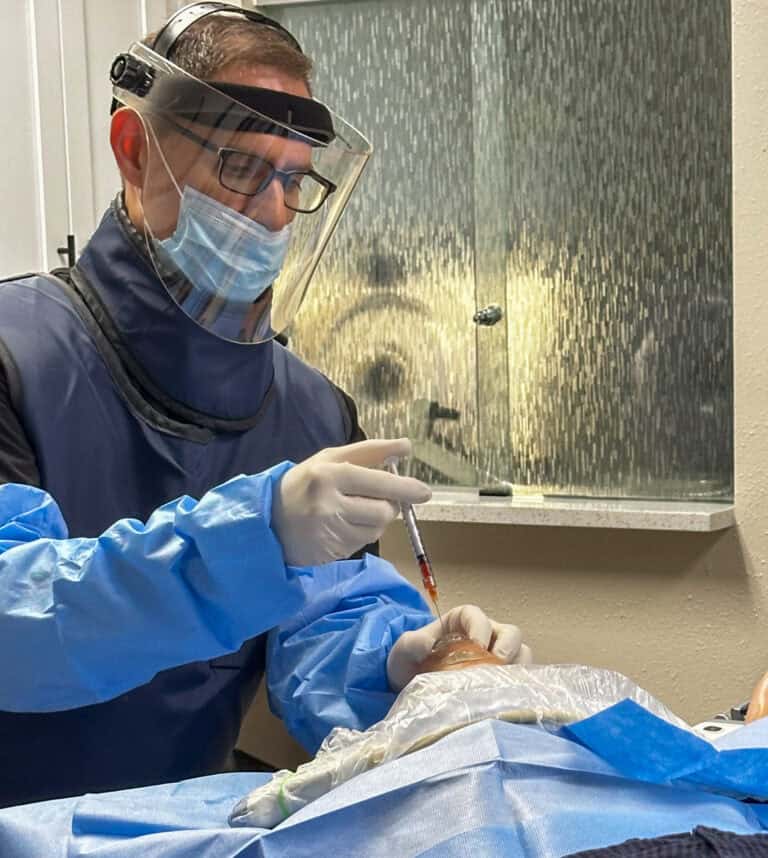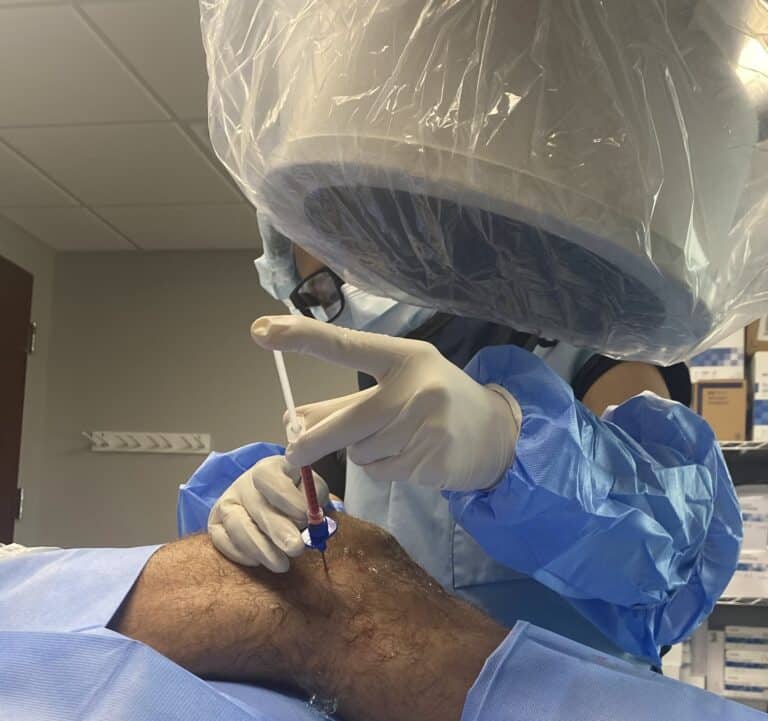Erica is a patient of the New Regeneration Orthopedics office in Tampa. She is an avid athlete, having achieved a four-man skydiving championship before becoming a competitive runner and racer. When we met Erica, she had some serious running pace and distance goals, to the tune of the 2018 Philadelphia Marathon, and the 2019 Michelob Ultra Challenge (which is 30 miles over four races spanning two days), but her training came to a sudden halt when she started being limited by foot pain.
Erica finally came to us when she had reached a frustrating dead end trying to find relief from her Morton’s Neuroma pain. However, this story has a happy ending and Erica is back to 100% and was able to complete the 2022 Michelob Ultra Challenge this year, pain free!
Now, how did she get to her happy ending? Here is Erica’s Story:
In 2018, Erica started feeling pain in her foot when running and the pain escalated over about six months. It got to the point where her training was limited by the pain. It would limit her running, and be so sore after. She could even feel the pain in normal footwear throughout the day. She eventually went to a podiatrist who diagnosed her with Morton’s Neuroma. This condition is an enlarged, inflamed nerve between the toes, in her case between the 3rd and 4th toes (see images below).
So, when Erica would run she would get pain at the base of her foot and between her toes that would be so intense that putting pressure on it was difficult. The podiatrist reviewed her options and recommended against surgery, since it yields poor results for this condition, and then suggested a combination injection of alcohol and cortisone into the area. This injection was designed to shrink the nerve and reduce the surrounding inflammation. She got these injections every few weeks and the pain reduced a little bit initially, but then the effectiveness of these injections wore off over time. She still wanted to attempt the Philadelphia Marathon in 2018, but after all of these injections she noticed that the muscles in the foot looked as if they were deteriorating and atrophying. So, her foot was much weaker from the effects of the long-term corticosteroids, leaving her foot in even more pain after the Philadelphia Marathon.
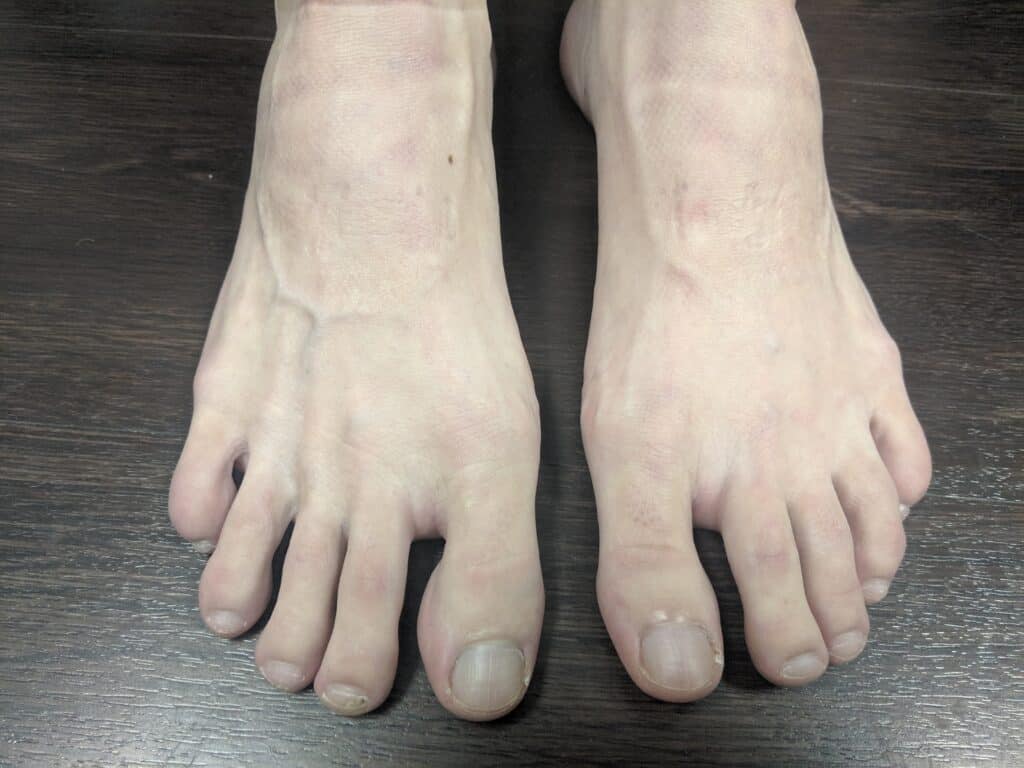
Erica was scared that she wasn’t going to be able to run again, and since she wasn’t getting sustained results, she considered surgery.
Right at the time that Erica was feeling like she was at a dead end, she met me at the Publix Gasparilla Distance Classic race expo. She spoke to me for quite some time about her injury, and I said that I was confident platelet rich plasma (PRP) could really help improve her condition and get her back to her running goals. Erica admits she was encouraged, but wanted to research for herself. She researched PRP and what she found made her feel comfortable. It has little risk or downside, and also it was logical in terms of the treatment’s physiology (essentially helping the body heal itself).
She decided to schedule a detailed consultation with me, where I reviewed her condition in the office and performed an extensive examination. I showed her where the tissues were thickened and the nerve was inflamed on the diagnostic ultrasound, and explained that she was a great candidate for PRP. Erica had her procedure, and waited a few weeks to start therapy with Dr. Perone with Love Health.
When Erica started therapy with Dr. Perone, she did a functional movement assessment, watching everything from her walking mechanics to her squat and single leg balancing. She tested each muscle in the feet, shins, legs and hips to check for discrepancies. Dr. Perone not only confirmed that there was muscle wasting in the forefoot around the injury, but that there were some tight muscles compensating in the shins, thighs and hips. She also discovered that Erica had some weakness in hip stabilizing muscles that caused an imbalance in the gait. All of these factors together could have caused the foot strike to be harder on that foot, causing a repetitive microtrauma, inflaming the area. Dr. Perone really focuses on getting to the “why” of the problem, not just focusing on the fact that it’s Morton’s neuroma.
Dr. Perone saw Erica once a week for a month or so, and she performed a lot of hands-on manual therapy as well as creating a customized corrective exercise program that evolved as Erica progressed in her recovery. Then when she started to do better, the visits got spaced out to two weeks, then four weeks, and so on until Erica was ready to “return to play” and start running, implementing what she learned in therapy.
Dr. Perone is also a huge stickler for footwear. She looked at the current shoes and socks Erica had been running in (and even wearing every day) and recommended shoes with a larger toe box. Where the toes are in typical shoes tends to be narrow, but what is healthy for the feet is a shoe that allows the toes to splay. This also means that footwear like high heels that put the foot into a tight space and increases pressure on the ball of the foot could lead to similar issues.
In addition to adjusting the footwear, she recommends other foot health measures, such as:
- Strengthening the feet with specific exercises
- Work up to wearing gel toe spacers as much as possible (this helps to strengthen the muscles in the forefoot and prevent tight toes).
- When wearing shoes, wear socks like Injinji socks that do not compress around the toes.
- Be more conscious during walking and running to look and feel for compensation.
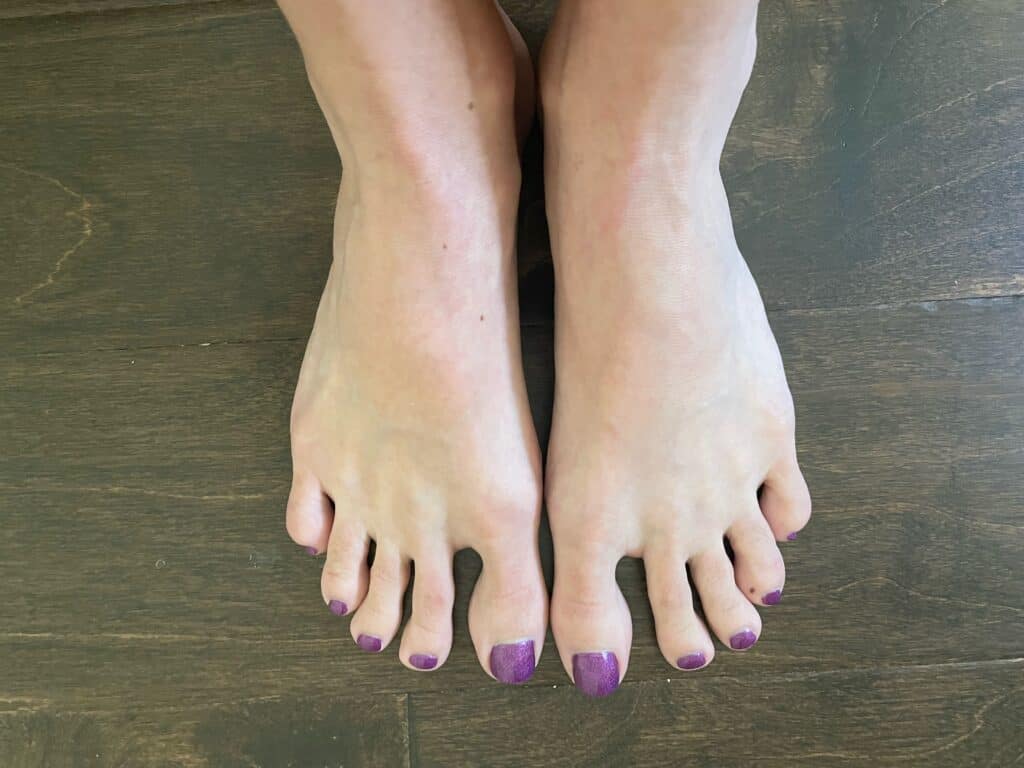
Today, Erica says she is back to 100% in her running training. She was able to finally run in the Michelob Ultra Challenge this year, in 2022, and placed in the top 5 of her age group! She is still training and shooting for more races, and she is just so excited she can run without pain.
About her treatment, Erica said:
The combination of the procedures at Regenexx with Dr. Papas and physical therapy with Dr. Perone changed my life. I was feeling so helpless just before I started working with them, and now feel so empowered being able to run long distances again. While the procedure of course did its job and allowed me to get back to running, I don’t think I would have gotten to the same point without Dr. Perone’s help post-procedure and may have even ended up with Morton’s Neuroma returning, and also picked up a lot of good habits and knowledge from her to help prevent it again in the future. I’d highly recommend Regenexx, Dr. Papas, and Dr. Perone to anyone dealing with any type of tissue, nerve, muscular, etc. injury. It really helped give me my life back – I can’t thank them enough!
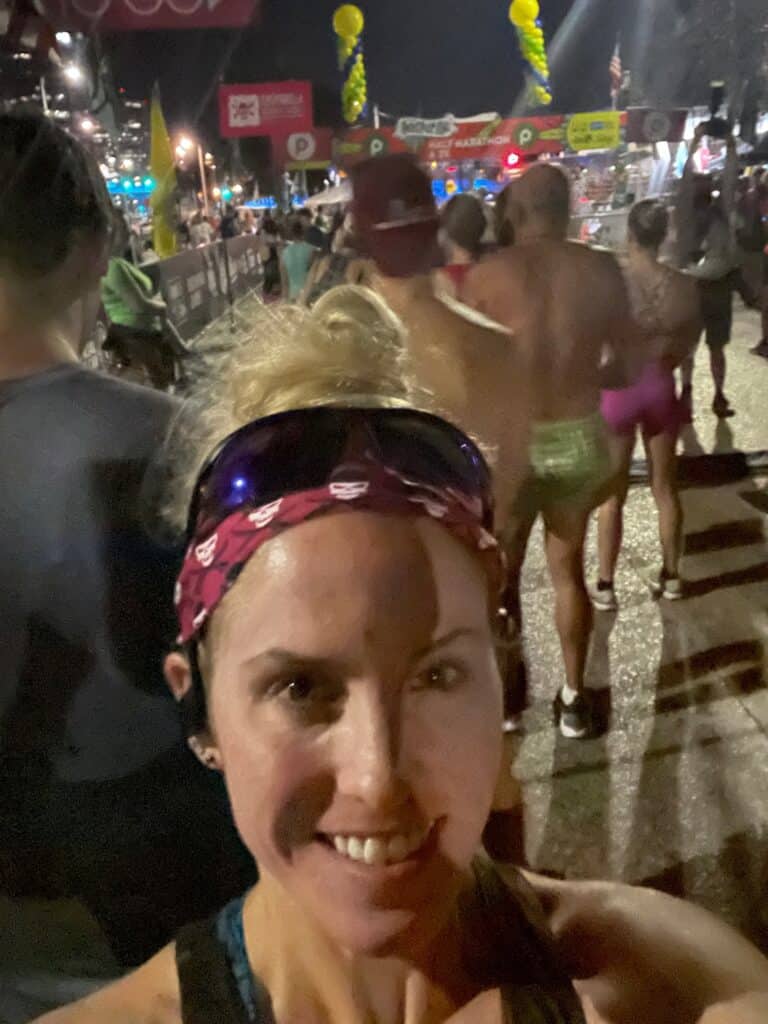
This is what we live for at Regenexx at New Regeneration Orthopedics. We love to help our patients get back to what they love to do.
To get more specifics about Erica’s PRP procedure, read this blog by Dr. Centeno.
If you think you might be suffering from Morton’s Neuroma, please don’t hesitate to reach out and get a consultation in one of our offices.
